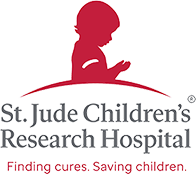
Uncertainty is nothing new — but for retirees, it can feel more personal. When you’re no longer earning a paycheck, everything from rising prices to market swings can impact how secure and steady your retirement income feels. The good news? Financial resilience gives you a sense of stability, no matter what the economy, headlines, or markets are doing.
Financial resilience isn’t about predicting the future.
It’s about creating a retirement that stays steady, flexible, and confident through every economic season. It means having a plan that supports your lifestyle, protects your income, and reduces the need to make emotional decisions when the world feels uncertain.
This guide breaks down what financial resilience really is, why it matters, and the simple steps you can take to strengthen your retirement — whether you live in Florida, California, Texas, or anywhere else in the country. Read More


The New Retirement Reality: Knowledge Is Your Strongest Asset
Retirement used to mean a pension, a gold watch, and a predictable income. But today’s retirees face a very different landscape—rising healthcare costs, complex tax rules, volatile markets, and fewer employer pensions.
In this environment, your most valuable resource isn’t just your savings—it’s your financial literacy.
Financial literacy in retirement means understanding how your money works, how different income sources are taxed, and how to make informed decisions that protect your lifestyle. Without it, even a large nest egg can be vulnerable to costly mistakes. Read More


October Wrap-Up: Planning Ahead for a Stronger 2026
As Financial Planning Awareness Month comes to a close, it’s the perfect time to take action before the year ends.
October has been about understanding your income, risks, healthcare costs, and protection strategies — now it’s time to put it all into motion.
With just a few months left in 2025, you still have time to make strategic moves that can strengthen your finances for the year ahead.
Here’s your year-end financial planning checklist to help you prepare confidently for 2026. Read More

Why Health and Wealth Are More Connected Than Ever
When planning for retirement, most people focus on saving enough money to live comfortably. But there’s one expense that catches many retirees off guard — healthcare.
As people live longer, healthcare becomes one of the largest and most unpredictable retirement costs. And without careful planning, medical expenses can quietly drain even the best-built nest egg.
This Financial Planning Awareness Month, it’s time to connect the dots between your healthcare strategy and your retirement income plan. Read More

Planning Doesn’t End When You Retire
Reaching retirement doesn’t mean your financial planning journey is over—it means it’s evolving. After decades of saving, the challenge shifts from building wealth to preserving and managing it.
This October, during National Financial Planning Awareness Month, it’s the perfect time to make sure your plan is keeping up with your life, your goals, and the economy.
Why Ongoing Planning Matters
A financial plan isn’t a one-time document—it’s a living strategy. Life changes, markets fluctuate, tax laws evolve, and healthcare costs rise. Without regular check-ins, even a solid plan can drift off course.
Common Triggers That Require a Plan Update:
- A spouse retires or starts Social Security
- A new grandchild or inheritance
- Health or long-term care needs change
- Market conditions shift significantly
- Major expenses arise (home repair, travel, family support)
Proactive reviews ensure your plan adapts before small issues become big problems. Read More



Time Can Be Your Greatest Ally—or Your Biggest Expense
When it comes to financial planning, doing nothing can be the most expensive decision of all. Every year you delay taking action—whether it’s buying life insurance, starting an annuity, or repositioning investments—you lose something that can’t be recovered: time.
October’s National Financial Planning Awareness Month serves as a reminder that financial confidence begins with early preparation. And waiting even a few years can have lasting consequences on your income, security, and peace of mind.
The Hidden Costs of Waiting
1. Lost Compounding Growth
Compounding is often called the “eighth wonder of the world” for a reason—it rewards time, not timing.
Let’s say you plan to start saving $500 a month for retirement at age 50. If you wait just five years—until age 55—you’ll end up with nearly 30% less at retirement, even if you earn the same rate of return. Read More


















